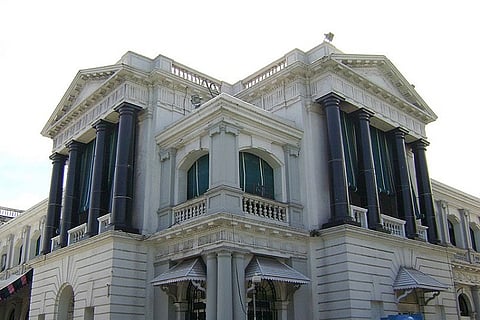

On January 9, as Tamil Nadu geared up for yet another stormy Assembly session in times of political uncertainty, a more worrying truth was delivered. Governor Banwarilal Purohit who addressed the MLAs made it clear that the state's revenues had not increased as expected and that we could be facing a deficit higher than projected in the last budget.
In the 2017 budget, the Total Revenue Receipts (TRR) had been projected at Rs 1,59,363 crore. But the revenue expenditure was estimated at Rs 1,75,293 crore, leaving the revenue deficit at Rs 15,930 crore.
Two years ago, the Comptroller and Auditor General (CAG), in its report for the 2015-16 accounts, had criticised the government for not containing the deficit in the revenue account.
At the time, Tamil Nadu was amongst the few states with a deficit in its revenue account. This means that the government’s actual net receipts are lower than the projected receipts.
So why is Tamil Nadu facing a revenue deficit?
When you look at data from 2011, Tamil Nadu found itself in an enviable position where it had a revenue surplus. But this excess revenue dwindled from Rs 1,364 crore from the 2011 budget to Rs 289 crore in the 2013-2014 budget.
This was attributed to a continuous slowdown in tax collections in the state. Tamil Nadu’s Own Tax Revenue, which is the way it raises taxes locally was Rs 85,772.71 crore as per the revised estimates for 2014-2015. But the projection was actually Rs 101,557.18. The expenditure was however Rs 1,47,297 crore thus leading to the deficit.
Following this, it has been a downhill ride with the deficit only growing. The revenue deficit for 2018-19 is now expected to increase to Rs 25,334 crore.
Reasons for growing deficit
TNM spoke to several economists who have been following this worrying increase in revenue deficit and the following are the reasons that were listed for plunging revenue.
1) Fall in tax revenue after demonetisation
One of the reasons that most economists agreed upon was the falling tax revenue in the state. While the tax collection itself, they claim, is problematic, the bigger problem allegedly came with demonetisation.
It led to the real estate industry collapsing, thus leading to a fall in stamps and registration collections following November 2016. Demonetisation has also affected the small and medium industries which have been responsible for contributing to the economy in a large manner. Textile and fireworks industries, economists point out have taken a huge blow, slowing down the manufacturing industry as a whole.
Despite this, no new taxes were introduced in the 2017 budget to supplement revenue.
2) Political uncertainty and corruption
Economists allege that the political uncertainty has created a vacuum in leadership in the state. There is no decisive action taken by the government in terms of much needed investments. And when investors express interest they are allegedly asked to pay large bribes and subjected to red-tape.
3) Delay in funds release from Centre
There has been an increase in the states’ share in centrally sponsored schemes and this has hampered its finances. Tamil Nadu Finance Secretary K Shanmugam had earlier told The Hindu - “There has been delay in release of funds by the Centre even after spending the money on those schemes. Dues from the Centre are to the tune of ₹5,000-6,000 crore. Had they released the funds on time, revenue deficit could have been reduced.”
Since 2015, states have been under immense pressure after the spending pattern for 17 major social schemes was changed. Schemes like Sarva Shiksha Abhiyan, National Health Mission and Midday meals saw a 70% expenditure from the centre and 30% from state. But it was changed to an expenditure of the ratio 60:40, increasing the burden on the state.
4) Expenditure on welfare schemes
The government has admitted in the past that it continues to implement several welfare schemes that other states don't. Economists allege that the expenditure for social welfare schemes has increased every year, especially in terms of welfare schemes for members of the SC/ST communities. In addition to this, schemes such as special PDS at subsidised rates costs the state exchequer Rs 2500 crore a year. TN also provides its people with health insurance, maternity and marriage assistance programmes.
These schemes cost upto Rs 7000 crore a year but are deemed essential for protection of poor.